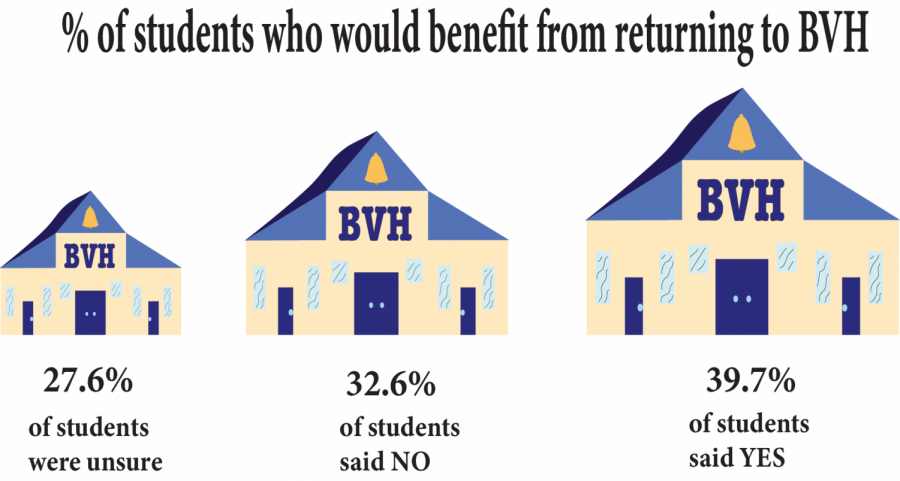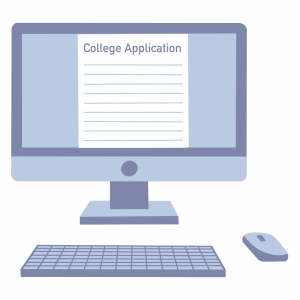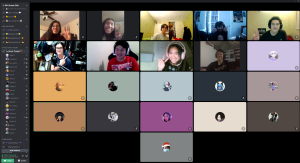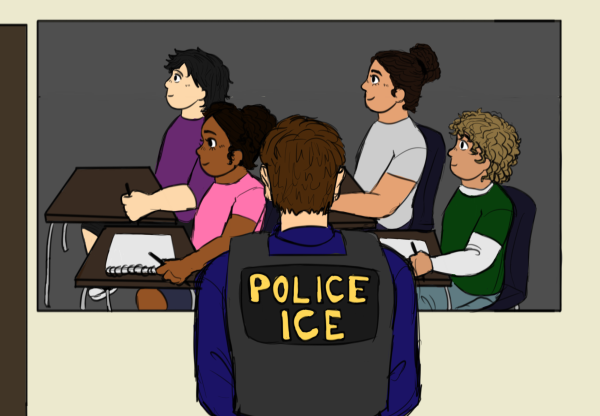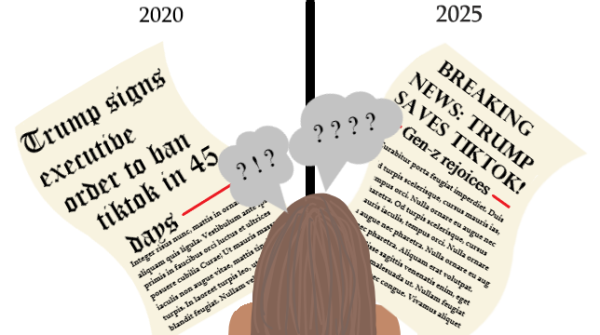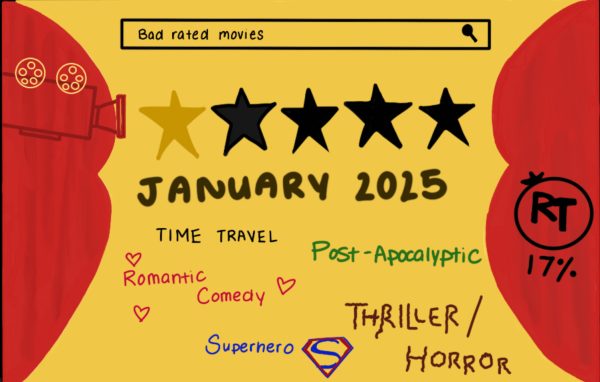Yes/No: Should students return to school?
Data collected from BVH students who believe whether or not they would benefit from returning to campus for the end of the 2020-2021 school year.
YES:
By: Nadia Martinez
In March 2020, a week before spring break, Bonita Vista High’s (BVH) students were sitting in their classrooms until the silence was broken by a voice on the intercom. Students, wriggling in suspense, were pleased and even surprised to hear that the last week of school had been canceled due to the COVID-19 pandemic.
We’re nearly a year into quarantine and most students haven’t returned to campus. Further time away from campus has only hindered many students’ mental health and education; therefore students should be able to go back on campus.
According to a study published in November 2020, by the Centers for Disease Control (CDC), mental health visits accounted for a higher proportion of pediatric emergency department visits during the pandemic compared to the same months of the previous year. Among teenagers aged 12 to 17, there was a 31 percent increase proving that, statistically, the pandemic has worsened students’ mental health.
According to the Suicide Prevention Resource Center (SPRC), mental health issues can adversely affect students’ academic performance, physical health, as well as their relationships with friends and family members. Problems with mental health will reduce the energy level, attention, dependability, mental ability, and optimism of a student, hindering learning. In a comparative study published by Sage Journals, the research shows that depression is correlated with lower grade point averages and that this correlation may be intensified by depression and anxiety. This is why it’s extremely important to focus and address the mental health of students as it directly hinders their education.
Since schools have gone online, motivation to do work has decreased and has become an uphill battle for many students as distance learning continues. As the Crusader has previously reported in the article “‘I’m not doing okay right now’”, the pandemic has been stressful for many students who struggle in finding a balance between getting work done and dealing with distractions at home. Many children struggle to keep their attention on the screen for many hours when they have chores to do or younger siblings to take care of.
Additionally, the CDC reported that in the United States, indications of anxiety disorder and depressive disorder rose dramatically between April and June of 2020—when the COVID-19 pandemic started—compared to 2019. The isolation from being in quarantine for a year has taken a drastic toll on students because they can’t see or talk to their friends every day. With disturbances at home and poor mental health, such as depression and anxiety, it can be difficult to find the motivation to do school work.
Being back on campus would help students improve their mental health since they are no longer isolated from social interactions. Many educational experts say that in-person learning is overall better for a student’s education. According to the American Academy of Pediatrics, schools provide more than just academics to students: they provide a way to exercise social and emotional skills and have access to mental health and other support services. Although there are support groups online offered by BVH to help students with their mental health, many have seen a decrease in attendees since the pandemic, which correlates to the increasing rates of mental health concern.
Many of these resources are taken for granted, but there are many students who are suffering without them. Before, students whose parents couldn’t afford to buy enough food could go to school to eat school lunches. Students who couldn’t print their assignments could print their assignments on campus. Students who needed help with homework could go to the cafeteria for team tutoring. Now with distance learning, most of those resources aren’t as accessible. Despite BVH’s efforts in offering alternative resources such as food drives, this doesn’t compare to the food supply that is offered every day when students are physically at school.
Although some would argue that we should stay safe and not go back to school, they fail to realize that we can go back on campus and continue to be safe. In fact, there are guidelines that the CDC made for schools to go back to on-campus instruction. We could use these guidelines to formulate a plan for BVH to go back to school.
As stated by the CDC, there is a hybrid learning model for schools to begin integrating students back to campus in which most students and teachers participate in in-person learning some days then engage in virtual learning on other days. In-person courses could host slightly larger groups of students, with a combination of physical and online classes. There would be minimal object sharing between students and educators. All precautions to protect one another, such as proper use of face masks, social distancing, and hand hygiene would be practiced by students, teachers, and administrators. Regularly scheduled cleaning of commonly infected areas would also take place daily.
Implementing health guidelines such as these are key in formulating a plan to open up BVH. As long as the guidelines are followed and carried out properly, returning to campus is a realistic option that BVH should come sooner.
Although there are some considerable risks with going back on campus, we should be able to have the option to return to in-person learning. With this plan, we could go back and have the benefits that came from physically being in school, while also being able to stay safe during this pandemic.
The pandemic may not be over, but the future is becoming more hopeful, especially with the COVID-19 vaccines out and being administered. According to SanDiegoCounty.gov, the distribution of the COVID-19 vaccine is being done in phases. As of right now, health care workers, which include people age 65 or older, staff working in behavioral health residential, providing emergency medical services, etc, are able to get vaccinated right now.
Going back with caution should be our first step, and it will definitely be a step in the right direction for the sake of both students’ mental health and education. After going through a year of uncertainty, it’s time to regain some semblance of normality by socially interacting with other students and teachers while remaining six-feet apart, wearing masks, and over-all being cautious. It’s better for the students to go back with caution than not going back at all.
NO:
By: Laurinne Eugenio

School gates are finally open, and students rush to campus with their face masks on. Staff and students socialize and interact with each other while staying six feet apart. This sounds like an exciting dream that some staff, students and family members hope can be turned into a reality.
However, as of Feb. 12, according to the County of San Diego’s public health information on COVID-19, cumulative positive cases passed the quarter-million mark to 250,791, while the total number of deaths went up to 2,979 within the county. Amid the rising cases, San Diego remains in the “purple” tier of the economic reopening guidelines. Because the safety and well-being of both students and staff within the Sweetwater Union High School District (SUHSD) should be the utmost priority, the SUHSD board should decide to not reopen schools on March 1.
A common misconception that many consider a justification for reopening schools is that infants, children and adolescents are immune to the virus. This is false. In fact, in a report by the American Academy of Pediatrics (AAP) and Children’s Hospital Association, it was concluded that as of Feb. 4, “About 2.93 million children have tested positive for COVID-19 since the onset of the pandemic.” Children also represent 12.9 percent of all nationwide cases.
Although some may argue that children can’t develop severe symptoms due to COVID-19, another report by the Centers for Disease Control and Prevention (CDC) clarified that “children are still at risk of developing severe illness and complications from COVID-19.” Moreover, all across the nation, approximately one in three children hospitalized due to COVID-19 were admitted to the intensive care unit.
The report by the AAP and Children’s Hospital Association also found that the death toll for children made up 0.00 percent to 0.26 percent of all COVID-19 deaths. The numbers might seem minuscule, but as parents of Skylar Herbert— the first child in Michigan to die of COVID-19 at Beaumont Royal Oak Hospital—LaVondria Herbert and Ebbie Herbert declared in an interview with the Washington Post that, “We just want the world to know that this can happen to anyone. This could have been your kids.”
According to a statement by Beaumont Hospital cited by Detroit-based news station Michigan WXYZ, “The loss of a child, at any time, under any circumstances, is a tragedy.” The reality is that children can still contract COVID-19. Children can still get hospitalized due to COVID-19. And, yes, children can still die from COVID-19.
When schools operate in-person, students, staff and teachers will inevitably be in close-contact settings. This is detrimental, as the CDC explains that schools are considered a “potential source of COVID-19 outbreaks, due to the number of individuals intermingling in close proximity for extended periods of time.”
Even worse, these close networks may result in the “K-12 school population and more broadly at-risk family members and caretakers to be at increased risk of transmission of the virus,” the CDC furthered. Families of students, staff and teachers at schools will be jeopardized if schools were to reopen, which will only worsen the increasing rates of positive COVID-19 cases.
The first on-campus COVID-19 case reported should be the last to ever occur at Bonita Vista High (BVH). Students like BVH senior Tatiana Eustaquio should never have to live through a battle against COVID-19 again. Based on a poll conducted by the Crusader on Feb. 12th, out of 437 BVH students, 135 students reported having lost someone they know from COVID-19. Going back to in-person school should not be prioritized over peoples’ lives, and it’s not worth risking the loss of another loved one ever again.
On the other hand, people who are in favor of going back to in-person school describe that distance learning takes a toll on students’ mental and emotional health. It is indisputable that quarantine and distance learning feels isolating. In turn, the CDC recommends various healthy ways to cope with stress, such as taking deep breaths or meditating, exercising regularly, connecting with others and many more.
BVH students can also join clubs within the school that are geared towards establishing a tight-knit community and combating the feelings of disconnectedness despite the pandemic. In other words, we must not forget the importance of prioritizing one’s well-being, reaching out and asking for help while in isolation.
We must focus on the silver lining and benefits of staying in distance learning, for it will help slow the spread, flatten the curve and protect the most lives. The SUHSD board should keep its promise of “putting students first.” This means making SUHSD staff and student safety, health and overall well-being a priority. Ultimately, the SUHSD board should vote “NO” to reopening schools on March 1.

I am a senior at Bonita Vista High and a third year staff member on the Crusader. This year, I am co-Editor-in-Chief, and previously was Opinion Editor...

I am a senior at Bonita Vista High and this is my second year on staff. I’ve always liked how unbiased and informative the crusader was and it was a...

My name is Kara Barragan and this is my fourth and final year with the Crusader. As a freshman I was on the lookout for an outlet where I could put out...

